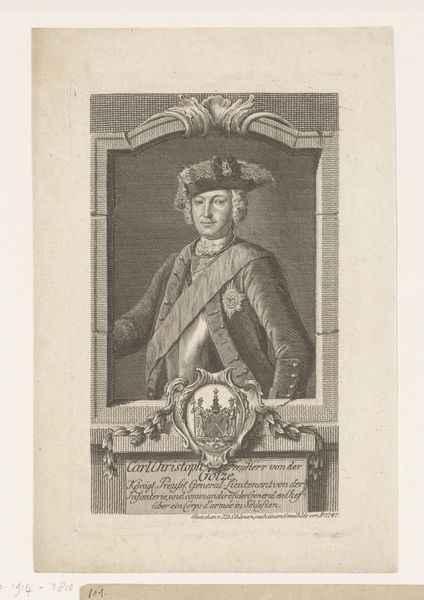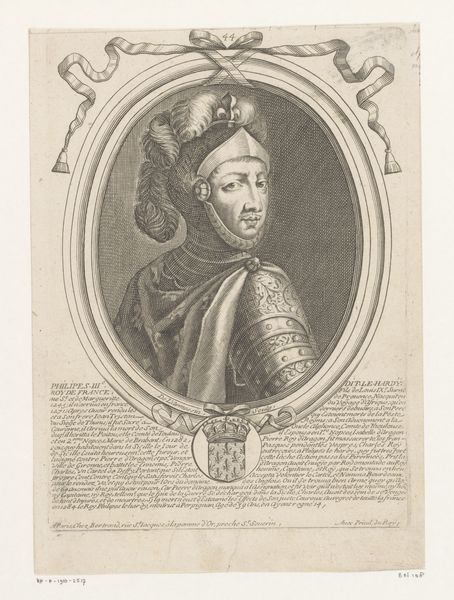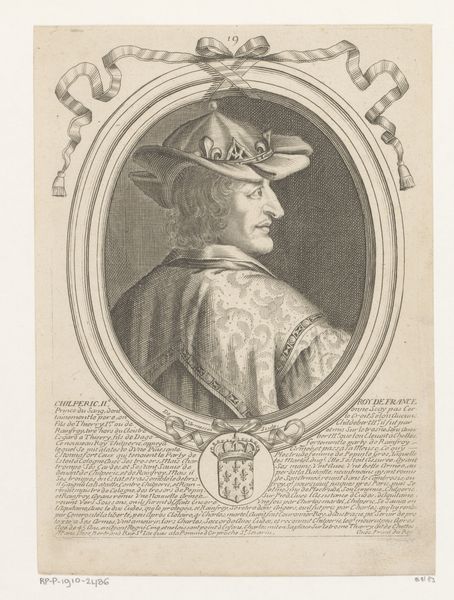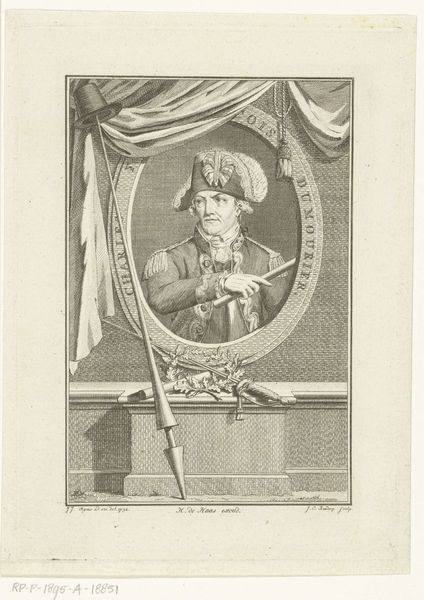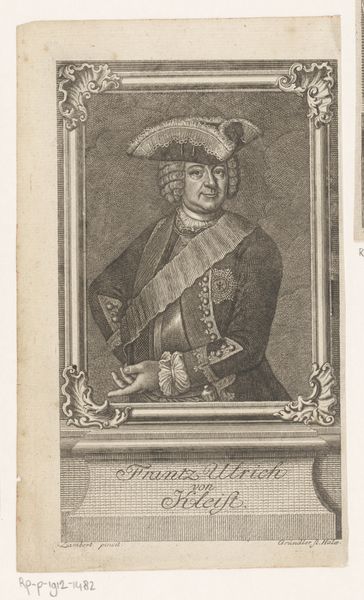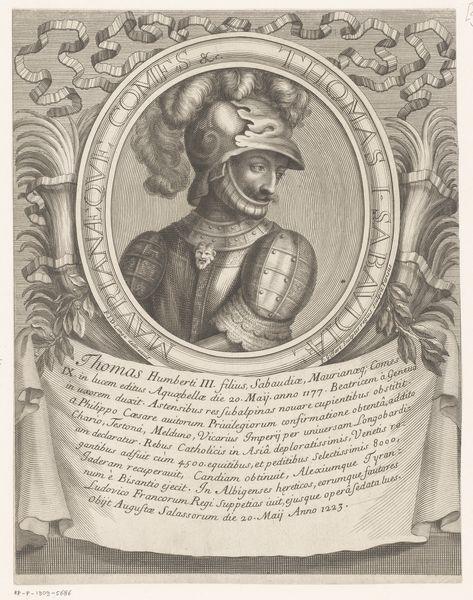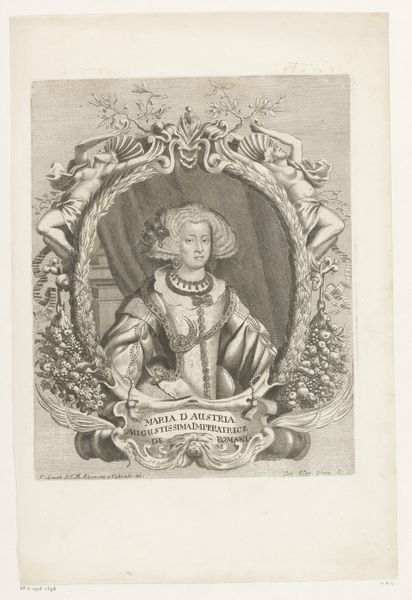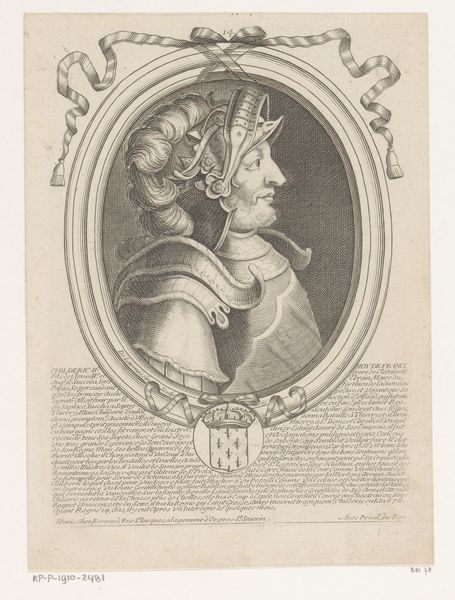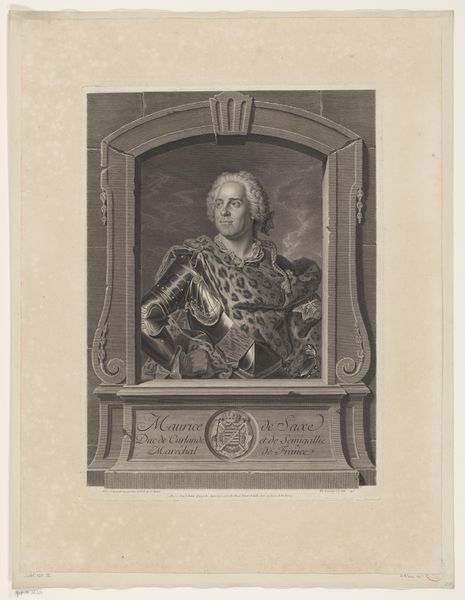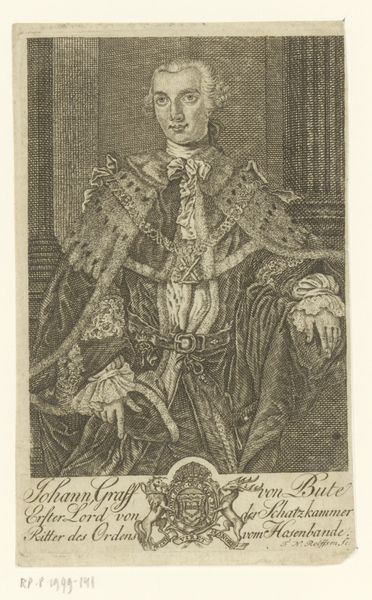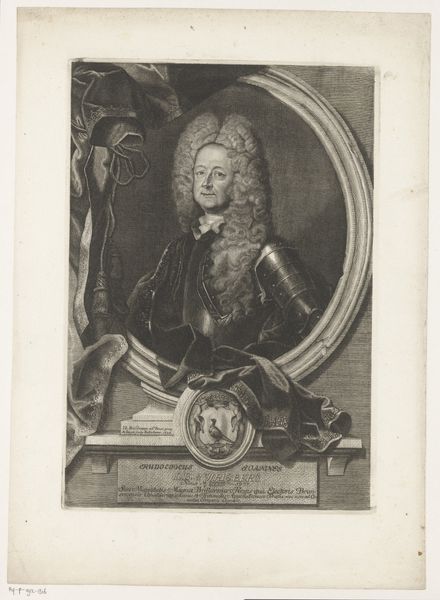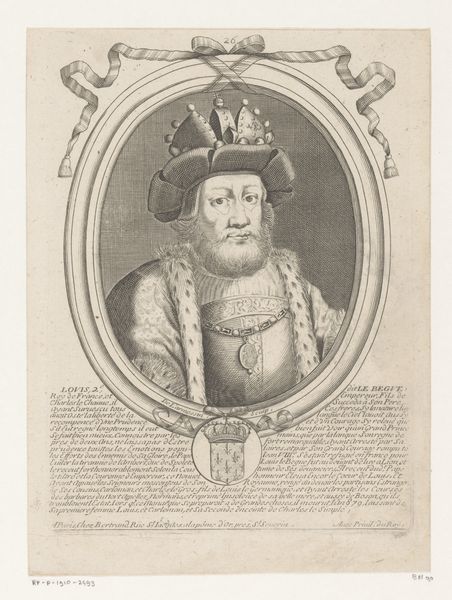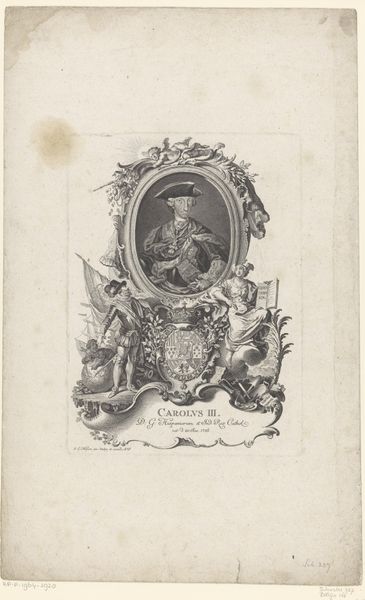
engraving
#
portrait
#
baroque
#
history-painting
#
engraving
Dimensions: height 531 mm, width 388 mm
Copyright: Rijks Museum: Open Domain
Editor: Here we have a portrait of Frederick the Great, made sometime in the 1740s or 50s by Philipp Andreas Kilian. It’s an engraving. There’s such ornate detail packed into this small space! How does this image play into the cult of personality around Frederick the Great? Curator: Well, think about it – engraving as a medium was ideal for dissemination. Prints like these, commissioned by or for Frederick, circulated widely, constructing and reinforcing a specific image of him. We’re not just looking at a likeness, but at a carefully crafted piece of political communication. Notice how the elaborate frame mimics architectural ornamentation, lending the portrait a sense of monumental importance. Editor: That's true. The frame almost overwhelms the portrait itself! But what message was this trying to convey? What did Frederick *want* people to think about him? Curator: He wanted to project power, intellect, and legitimacy. The military regalia and the regal bearing speak to power, but consider the context: Frederick was keen to be seen as an enlightened ruler, a patron of the arts and sciences, not just a military leader. How might this portrait contribute to that carefully constructed image? What elements tell a more complex story? Editor: I see your point! While he's got the stern look and military outfit, there's something almost…theatrical about it. It feels very staged, like a performance of kingship. The elaborate frame further emphasizes the performance and drama. Curator: Precisely! The performance of power was just as important as the possession of it. Images like this were vital in shaping public perception and solidifying Frederick's position on the European stage. What do you take away from how art was actively employed in statecraft at that time? Editor: That it's never just a picture. It's a political tool, carefully designed to influence public opinion and reinforce authority. Understanding the context makes all the difference.
Comments
No comments
Be the first to comment and join the conversation on the ultimate creative platform.
